 W
WThe Siege of Bihać was a three-year-long siege of the northwestern Bosnian town of Bihać by the Army of the Republika Srpska, the Army of the Republic of Serbian Krajina and Bosniak dissenters led by the Bosniak politician Fikret Abdić during the 1992–95 Bosnian War. The siege lasted for three years, from June 1992 until 4–5 August 1995, when Operation Storm ended it after the Croatian Army (HV) overran the rebel Serbs in Croatia and northwest of the besieged town.
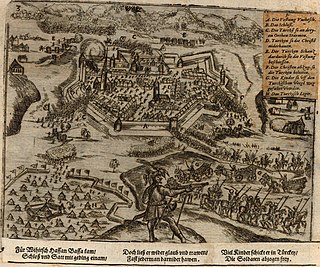 W
WThe siege of Bihać was the besieging and capture of the city of Bihać, Kingdom of Croatia within Habsburg Monarchy, by the Ottoman Empire in June 1592. With the arrival of Telli Hasan Pasha as the Beylerbey of the Bosnia Eyalet in 1591, a period of peace established between Emperor Rudolf II and Sultan Murad III ended and the provincial Ottoman armies launched an offensive on Croatia. Bihać, a nearly isolated city on the Una River that repelled an Ottoman attack in 1585, was one of the first targets. Thomas Erdődy, the Ban of Croatia, used available resources and soldiers to protect the border towns, but the Ottomans managed to take several smaller forts in 1591. As the offensive gained pace, the Croatian Parliament passed a law on a general uprising in the country on 5 January 1592.
 W
WThe Siege of Dubrovnik was a military engagement fought between the Yugoslav People's Army (JNA) and Croatian forces defending the city of Dubrovnik and its surroundings during the Croatian War of Independence. The JNA started its advance on 1 October 1991, and by late October, it had captured virtually all the land between the Pelješac and Prevlaka peninsulas on the coast of the Adriatic Sea, with the exception of Dubrovnik itself. The siege was accompanied by a Yugoslav Navy blockade. The JNA's bombardment of Dubrovnik, including that of the Old Town—a UNESCO World Heritage Site—culminated on 6 December 1991. The bombardment provoked international condemnation, and became a public relations disaster for Serbia and Montenegro, contributing to their diplomatic and economic isolation, as well as the international recognition of Croatia's independence. In May 1992, the JNA retreated to Bosnia and Herzegovina, less than 1 kilometre from the coast in some places, and handed over its equipment to the newly formed Army of Republika Srpska (VRS). During this time, the Croatian Army (HV) attacked from the west and pushed back the JNA/VRS from the areas east of Dubrovnik, both in Croatia and in Bosnia and Herzegovina, and by the end of May linked up with the HV unit defending the city. Fighting between the HV and Yugoslav troops east of Dubrovnik gradually died down.
 W
WThe siege of Gvozdansko was an Ottoman siege of the fort of Gvozdansko in the Kingdom of Croatia in 1577–1578. In the 1570s, the Ottomans intensified their efforts to capture the valley of the Una River. A string of forts along the Una, centred around Gvozdansko and in possession of the Zrinski noble family, formed the main line of defense of Croatia since 1527. The fort held off Ottoman attacks in 1540 and 1561.
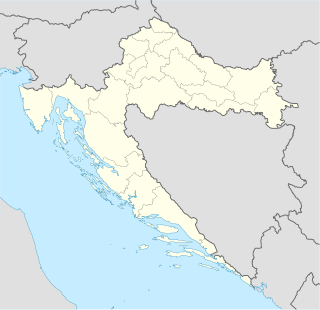 W
WThe 1991 siege of Kijevo was one of the earliest conflicts in the Croatian War of Independence. The 9th Corps of the Yugoslav People's Army led by Colonel Ratko Mladić and the forces of the Serbian Autonomous Oblast (region) of Krajina under Knin police chief Milan Martić besieged the Croat-inhabited village of Kijevo in late April and early May 1991. The initial siege was lifted after negotiations that followed major protests in Split against the JNA.
 W
WThe siege of Klis or Battle of Klis was a siege of Klis Fortress in the Kingdom of Croatia within Habsburg Monarchy. The siege of the fortress, which lasted for more than two decades, and the final battle near Klis in 1537, were fought as a part of the Ottoman–Habsburg wars between the defending Croatian–Habsburg forces under the leadership of Croatian feudal lord Petar Kružić, and the attacking Ottoman army under the leadership of the Ottoman general Murat-beg Tardić.
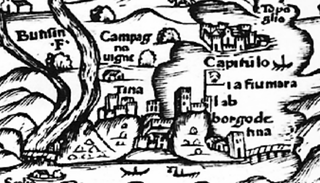 W
WThe siege of Knin was a siege of the city of Knin, the capital of the Kingdom of Croatia, by the Ottoman Empire in 1522. After two failed attempts in 1513 and 1514, Ottoman forces led by Ghazi Husrev Bey, sanjak-bey (governor) of the Sanjak of Bosnia, launched a major offensive on southern Croatia in the spring of 1522. In May, his forces, reinforced with troops from the Sanjak of Herzegovina and Constantinople, besieged the Knin Fortress.
 W
WThe Siege of Lastovo in 1000 was part of the campaign of Doge Pietro II Orseolo in southern Croatia and its bloodiest armed conflict between the citizens of Lastovo island and the army of Venice. The siege resulted in a Venetian victory and Lastovo was annexed into the Venetian republic.
 W
WThe siege of Novi Zrin ; Croatian: Utvrda Novi Zrin; Hungarian: Új-Zrínyivár; Turkish: Zerinvar) in June/July 1664 was last of the military conflicts between the Croatian forces led by Nikola Zrinski, Ban (viceroy) of Croatia, and the Ottoman army commanded by Köprülü Fazıl Ahmed Pasha, Grand Vizier, dealing with possession of Novi Zrin Castle, defended by Croats, situated on the bank and marshy islands of Mura River, near the border line between northern Croatia and southwestern part of Hungary, at the time occupied by the Ottomans. The battle resulted in destruction of the castle, and retreat of the Croatian crew, that was forced to withdraw to safer territory of inland Croatia.
 W
WThe Siege of Ragusa or Siege of Dubrovnik was fought between local Ragusan insurgents, as well as Austrian Croat troops and the British Royal Navy under Captain William Hoste against a French garrison under Joseph de Montrichard between 19 and 27 January 1814 during the Adriatic campaign of the Napoleonic Wars. The siege was fought on the coast of the Adriatic Sea for possession of the strategically important fortified town of Ragusa.
 W
WThe Siege of Varaždin was a siege in the Kingdom of Croatia. The war came as a result of Croatian, Slavonian and Hungarian noble diets electing different candidates for their kings, following the death of Louis II of Hungary at Battle of Mohacs.
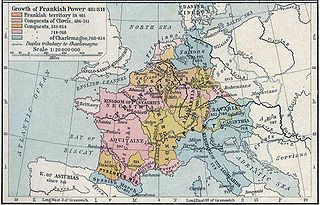 W
WThe siege of Trsat was a battle fought over possession of the town of Trsat in Liburnia, near the Croatian–Frankish border. The battle was fought in the autumn of 799 between the defending forces of Dalmatian Croatia under the leadership of Croatian duke Višeslav, and the invading Frankish army of the Carolingian Empire led by Eric of Friuli. The battle was a Croatian victory, and the Frankish commander Eric was killed during the siege.
 W
WThe Battle of Vukovar was an 87-day siege of Vukovar in eastern Croatia by the Yugoslav People's Army (JNA), supported by various paramilitary forces from Serbia, between August and November 1991. Before the Croatian War of Independence the Baroque town was a prosperous, mixed community of Croats, Serbs and other ethnic groups. As Yugoslavia began to break up, Serbia's President Slobodan Milošević and Croatia's President Franjo Tuđman began pursuing nationalist politics. In 1990, an armed insurrection was started by Croatian Serb militias, supported by the Serbian government and paramilitary groups, who seized control of Serb-populated areas of Croatia. The JNA began to intervene in favour of the rebellion, and conflict broke out in the eastern Croatian region of Slavonia in May 1991. In August, the JNA launched a full-scale attack against Croatian-held territory in eastern Slavonia, including Vukovar.
 W
WThe Siege of Zadar was a successful attempt of the Republic of Venice to capture Zadar, a Croatian coastal city in northern Dalmatia. It was a combined land and sea offensive by the Venetians, consisting of many separate battles and operations against the citizens of Zadar, who refused to accept Venetian suzerainty and demanded autonomy. Despite receiving military aid from Croato-Hungarian king Louis the Angevin, Zadar was unable to resist the siege and was finally defeated.
 W
WThe Siege of Zadar in 998 was part of the third Croatian–Bulgarian war and one of the last military conflicts between Croatian forces of King Svetoslav Suronja, supported by Venice and the Byzantine Empire, and the army of Emperor Samuil, who launched a large-scale Bulgarian military campaign against the Kingdom of Croatia.
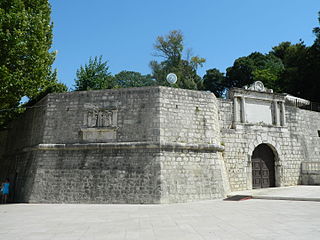 W
WThe Siege of Zara, also known as the Blockade of Zara, was a military event that took place between 22 November and 5 December 1813, during the Adriatic Campaign of the Napoleonic Wars. During the siege, an Anglo-Austrian force under command of George Cadogan in HMS Havannah blockaded and bombarded Zara which was then held by a French garrison. Within two weeks, the garrison surrendered to the attackers.
 W
WThe siege of Zara or siege of Zadar was the first major action of the Fourth Crusade and the first attack against a Catholic city by Catholic crusaders. The crusaders had an agreement with Venice for transport across the sea, but the price far exceeded what they were able to pay. Venice set the condition that the crusaders help them capture Zadar, a constant battleground between Venice on one side and Croatia and Hungary on the other, whose king, Emeric, pledged himself to join the Crusade. Although some of the crusaders refused to take part in the siege, the attack on Zadar began in November 1202 despite letters from Pope Innocent III forbidding such an action and threatening excommunication. Zadar fell on 24 November and the Venetians and the crusaders sacked the city. After spending the winter in Zadar, the Fourth Crusade continued its campaign, which led to the siege of Constantinople.